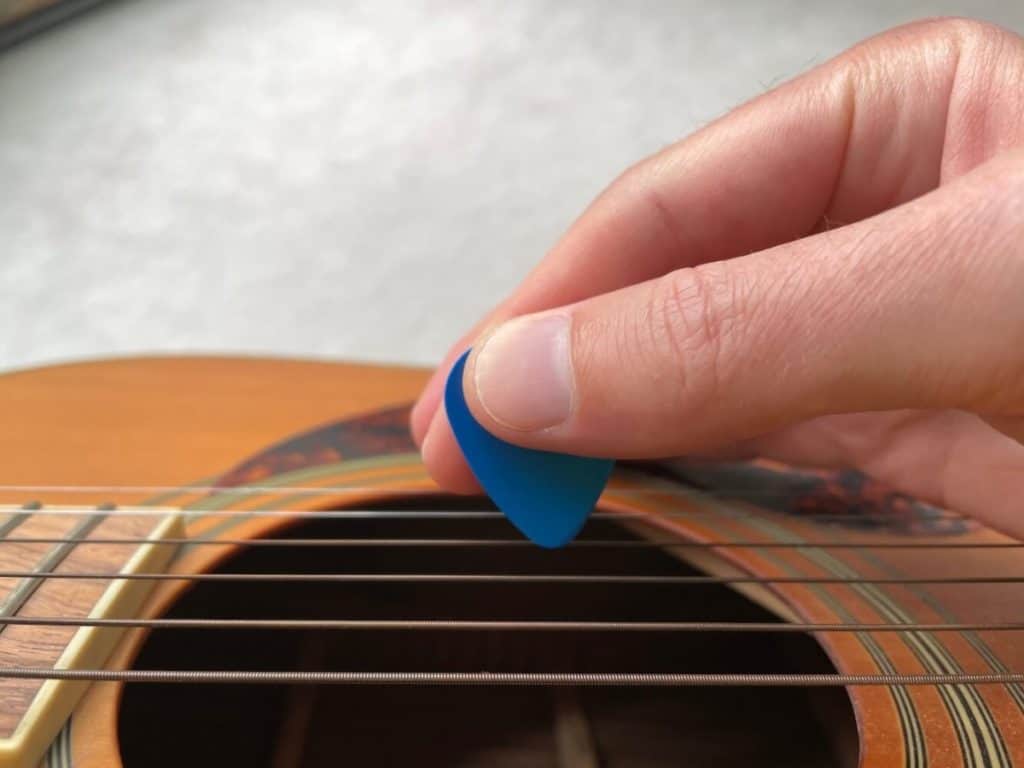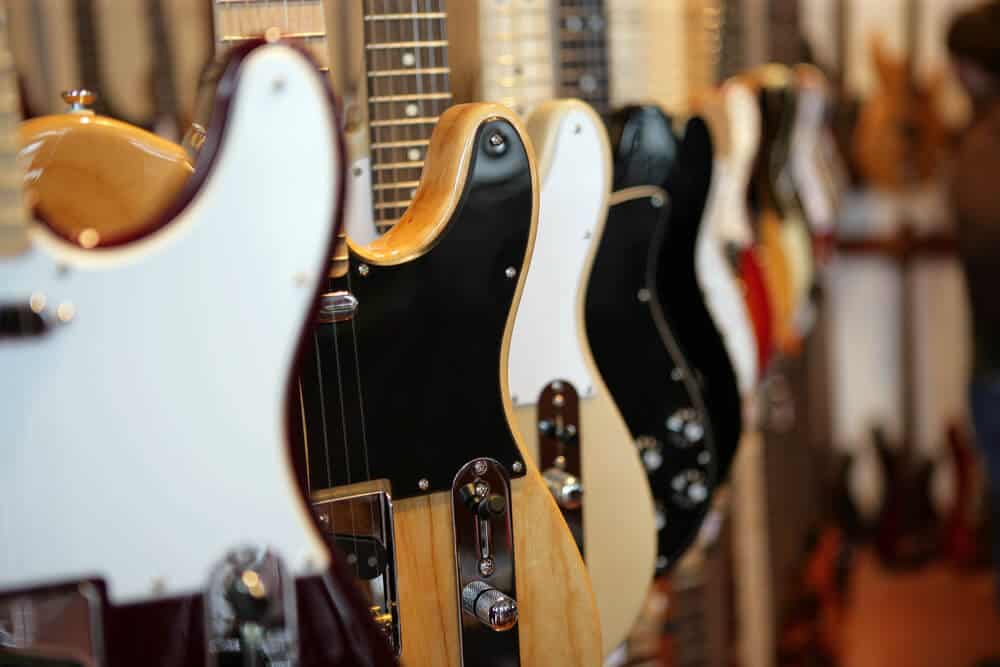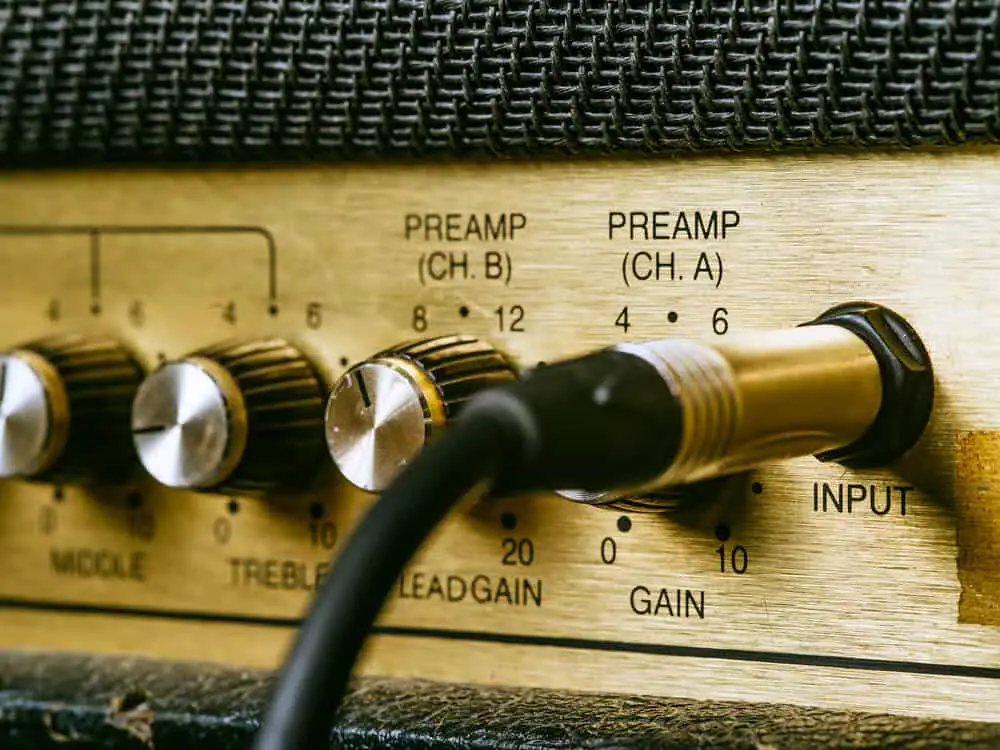Your guitar is tuned up and ready to go…but still sounds like garbage when you start strumming. Is something wrong with your instrument’s setup? Or is it you?
There are several reasons your guitar may sound bad, even when in tune. For beginners, the most likely culprit is poor fret hand or picking hand technique. It may also be due to cheap strings or a low-quality guitar. Don’t forget to check your guitar and amp settings: they may not be dialed in for your playing style.
Let’s dive into the specifics of why your properly tuned guitar may still sound bad.
1. Poor Fret Hand Technique

Learning to play guitar can be quite the task. If you’re a beginner, one of the hardest challenges you’ll face is getting your fingers covering the frets properly.
It can be frustrating at first: you try and play a chord, and only some (or none) of the notes resonate; you’re working on playing scales but all the notes sound muted; or you just can’t seem to get your fingers to bend and stretch to reach the notes you need to.
Poor fret hand technique is the most likely cause of your notes sounding terrible. Failure to cover notes firmly leaves them sounding dull and empty, while not being precise with your fretting technique may mute notes on adjacent strings.
How to Fix It
Learning proper fret hand technique takes time…a lot of time! But anything is achievable with deliberate practice.
When you’re just starting (or learning a new song), slow is smooth and smooth is fast. You can only pick notes as fast as you can cover them with your fret hand. Take your time and be sure you’re placing your hand just right on each string and chord, so you play the notes you want, not the ones you don’t.
Slow things way down and really focus on placing your fingers in such a way that each note and chord sounds clear and resonates well. When you get used to how well-played notes are supposed to sound, you’ll know when you’re doing it right and also when you’re playing too fast and getting sloppy.
Be patient. Even just getting your fingers to move and bend in certain ways will feel weird at first. But the more you practice, the more natural it will feel. In time, you won’t need to think about it at all. But only if you take the time to deliberately practice with good technique!
2. Poor Picking Hand Technique

If you’re a beginner, you’ll quickly find that picking notes is a lot harder than it seems.
Holding the pick isn’t as straightforward as you thought; picking the correct string while trying to look at your fret hand to make sure you’ve got your fingers in the right spots feels almost impossible; and you can barely get a handle on downpicking, but throw alternate picking into the mix and now you’re thoroughly confused.
Even if your fret hand is covering the right notes, they aren’t going to sound good if your picking hand doesn’t know what it’s doing.
How to Fix It
Again, the answer is deliberate practice. When learning how to pick, focus on precision over speed. You can be a fast picker, but if you’re not hitting any of the right strings, or your fret hand can’t keep up, what’s the point?
Take your time and make sure you’re playing the correct string(s) every time. Practice hitting each string without looking so you can develop a feel for where each string sits relative to the others. This will increase your picking accuracy, making individual notes and chords sound much cleaner.
Playing scales up and down one string is a great way to learn alternate picking. Take it slow, and once you build up speed, start playing scales or arpeggios along multiple strings. This will throw in the added challenge of timing your alternate picking to smoothly transition between strings.
Check out guitarists like Yngwie Malmsteen, who puts a classical spin on metal, or Metallica’s James Hetfield, a downpicking master, and you’ll notice two things: not only is their picking incredibly fast, but it’s very precise.
Pick slowly and focus on smoothness and precision. With time, the speed will come.
3. String Choice

Your strings can make your guitar sound bad for two different reasons: a) they’re low-quality, or b) they’re not the right strings for the style of music you play. Let’s address both of these.
Low-Quality Strings
Some strings are just low-quality. They’re poorly constructed, don’t feature any special coatings to improve sound or longevity, or are made of cheap materials. Not only will these strings need to be replaced more often, but they won’t hold a tune as long and will generally sound bad, no matter how good your playing skills are.
How to Fix It
Buy better quality strings! Guitar string sets are pretty inexpensive to begin with, so there really isn’t a reason to cheap out here. Saving a couple bucks on guitar strings isn’t worth it if it makes your playing sound terrible and discourages you from practicing because you don’t think you’re getting any better.
Once you slap on some quality strings, you’ll be surprised at the difference they make.
Wrong Strings for Music Style
Even high-quality strings won’t sound quite right if they’re not designed for the style of music you play. While there are many strings that can handle playing a wide variety of music decently well, there are others that are specifically designed to enhance certain types of music.
If you like playing folk music but use heavy gauge strings that lack brightness, or you downtune frequently but notice your light gauge strings don’t hold a tune very well, it’s not that your strings are bad: they’re just not ideal for your music style.
How to Fix It
Get the right strings for the style of music you play most frequently. Lighter gauge strings will have a brighter, twangier sound, while heavier gauge strings will have a deeper tone and will better combat fret buzz when downtuning. Choosing the optimal strings based on music style will have a significant impact on how your guitar sounds.
Do some research and see what strings your favorite guitarists use. Chances are you can find interviews where they discuss the gear they use and why they like it. Check out the websites from your favorite string companies too: they usually have guides to help you get the right strings for the music you want to play.
If you like playing a lot of different music genres, choose a more versatile string set that’s a good all-rounder. It won’t excel at any one style, but it will sound pretty good when playing most styles.
4. Cheap Guitar

With guitars, like most things, you get what you pay for.
A cheap guitar isn’t going to be built to the same high-quality standards as a more expensive instrument. Cheaper materials will be used in the construction process, and the guitar will likely be mass produced by machines rather than painstakingly built by hand. Because of these factors, it probably won’t sound as good or last as long.
There’s absolutely nothing wrong with a budget guitar.
That’s how most players (me included!) got started. But I like to differentiate between budget and cheap. Budget guitars provide the basics at a price that helps new musicians get started, while cheap guitars are all about saving as much money as possible at the expense of quality.
How to Fix It
It may be tempting to save some money and get the cheapest guitar you can find, especially if you’re a beginner, but you might end up spending more money in the long run when that cheap guitar breaks or becomes otherwise unusable.
You don’t need to spend a lot of money on your first guitar, but saving up so you can spend just a little bit more will leave you with a guitar that will sound great and grow with you as you improve. Check out our previous article for some examples of great cheap guitars for beginners or those on a budget.
Most major brands have some budget-friendly options available, so you shouldn’t have any trouble finding something within your price range. But you’ll want to stay away from those cheap no-name brand guitars, because they just won’t sound good or last long at all.
And it’s really hard to stay motivated to practice when your instrument sounds bad.
5. Wrong Guitar/Amp Settings

Electric guitars provide a wide range of adjustments to dial in the tone you want: you can select which pickups to activate, use the tone adjustment knob(s) on your guitar, or adjust the myriad of settings on your amp to achieve specific sounds.
However, all this adjustability can be overwhelming, especially if you’re a beginner. How does pickup selection affect your guitar’s sound? How do you adjust the treble, mid range and bass for the kind of music you’re playing? How much gain is too much?
And this doesn’t include all the effects you could have built into your amp or via separate effects pedals!
These adjustments can make or break your playing. See what your favorite hard rock song sounds like without any gain, or try playing some jazz with the wah effect on your amp turned on, and you’ll quickly realize how true this is.
While these examples are pretty obvious, more subtle differences are harder to notice. Your playing may sound a little off, but you just can’t figure out why…or what to do to correct it.
How to Fix It
Take time to play around with your guitar and amp settings and effects. Learn what each one does and how they alter your guitar sound. It’s perfectly fine to mix and match settings to get an idea of how they impact your playing.
It’s only by learning what each setting does and learning to hear the differences between them that you’ll be able to set your guitar and amp up correctly for the specific music style or song you want to play.
You know how you can identify your favorite guitarists as soon as they start playing? With enough experimentation, you may even develop your own unique sound!
